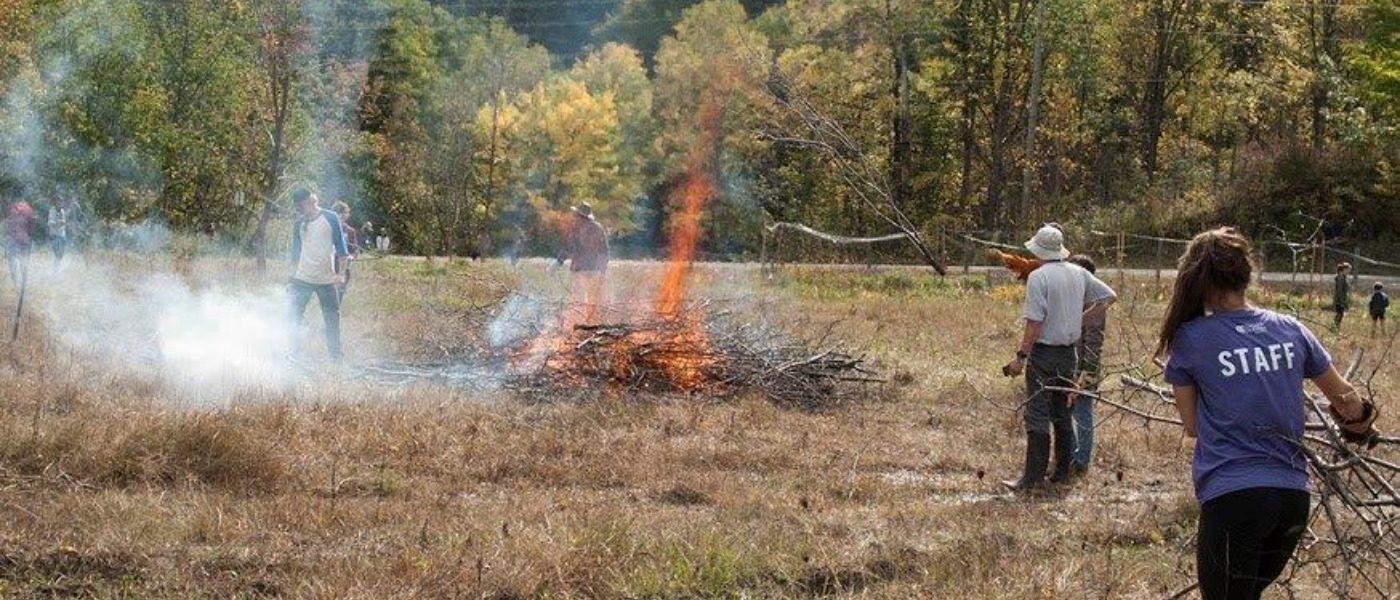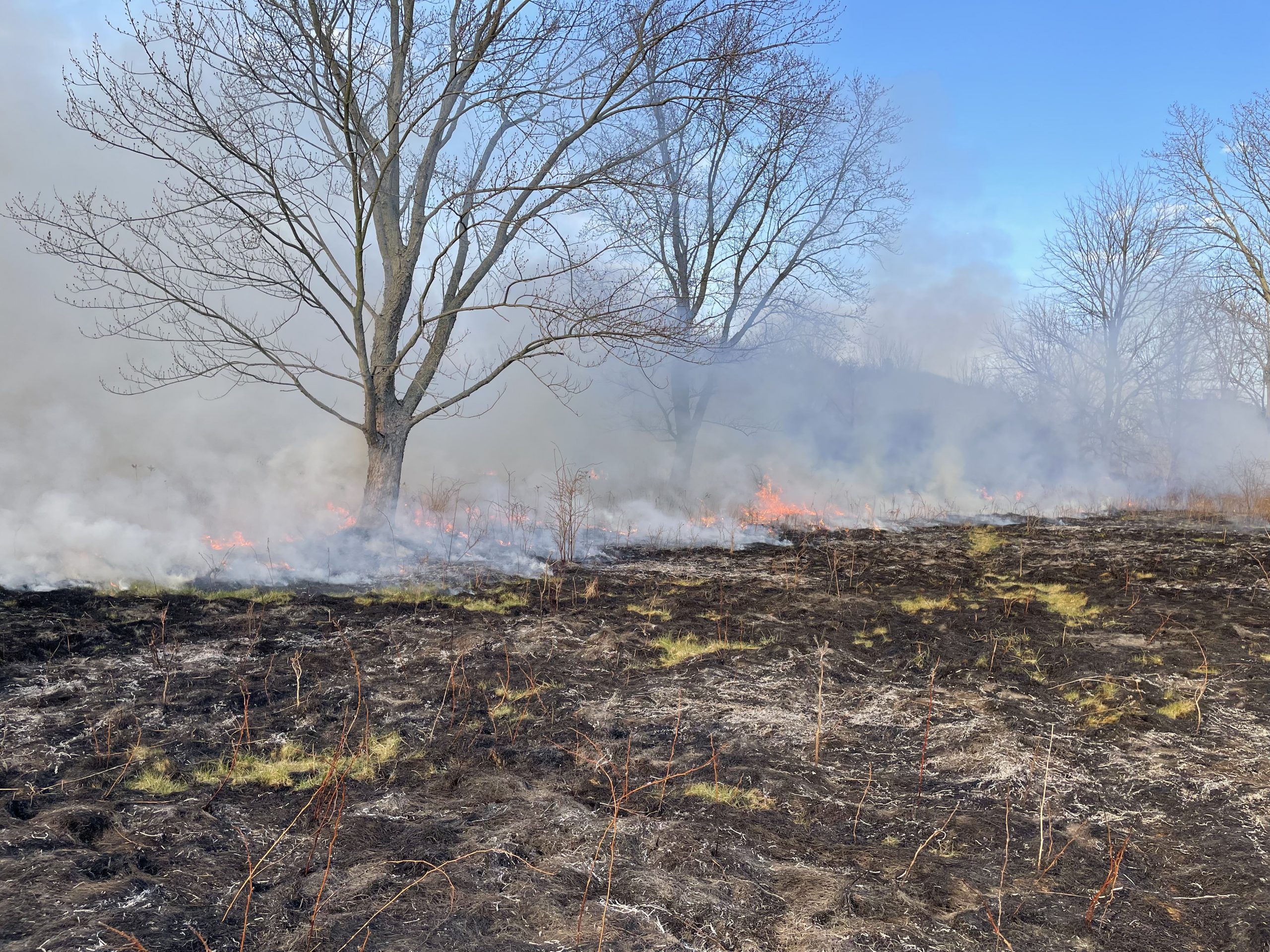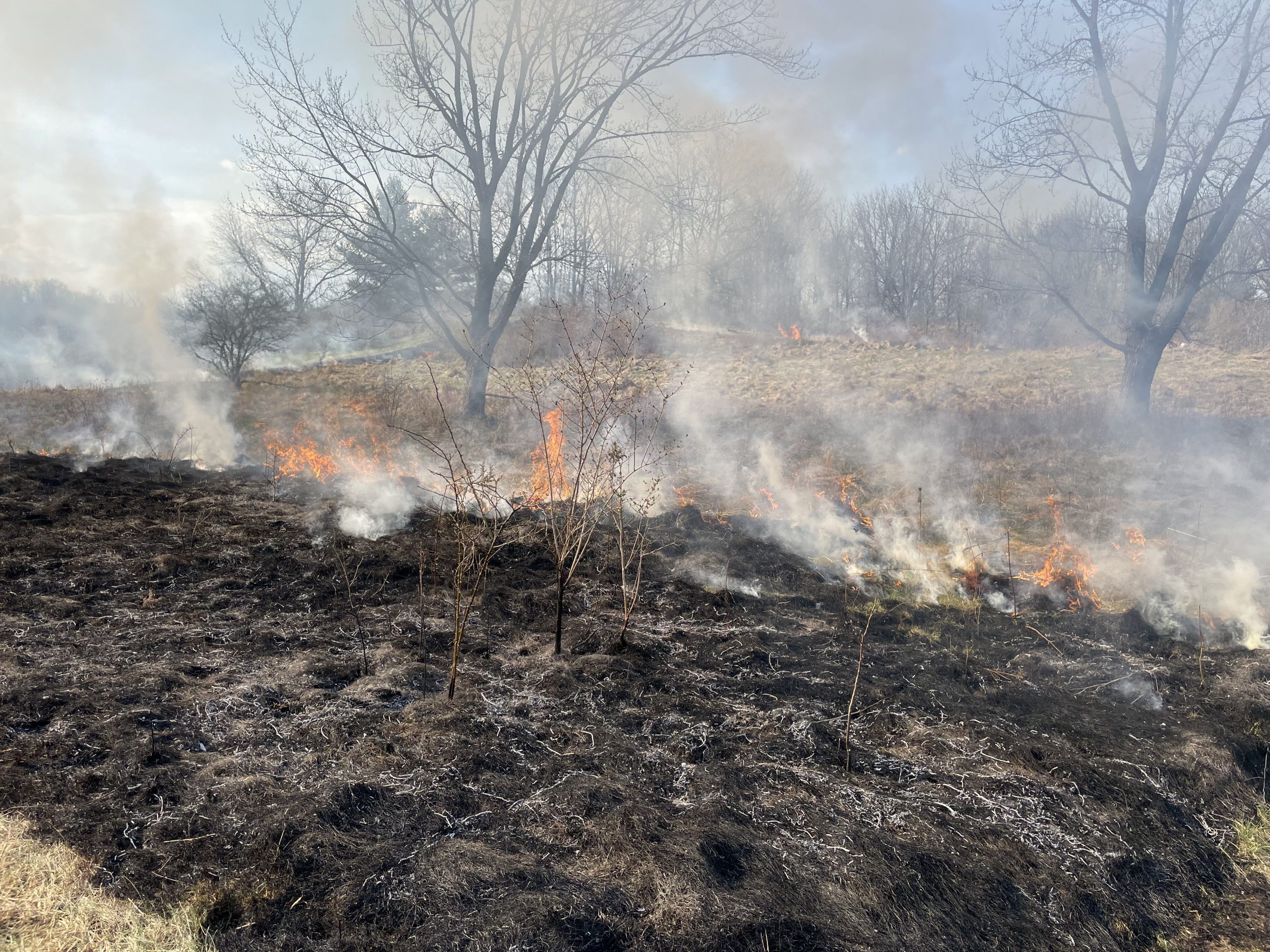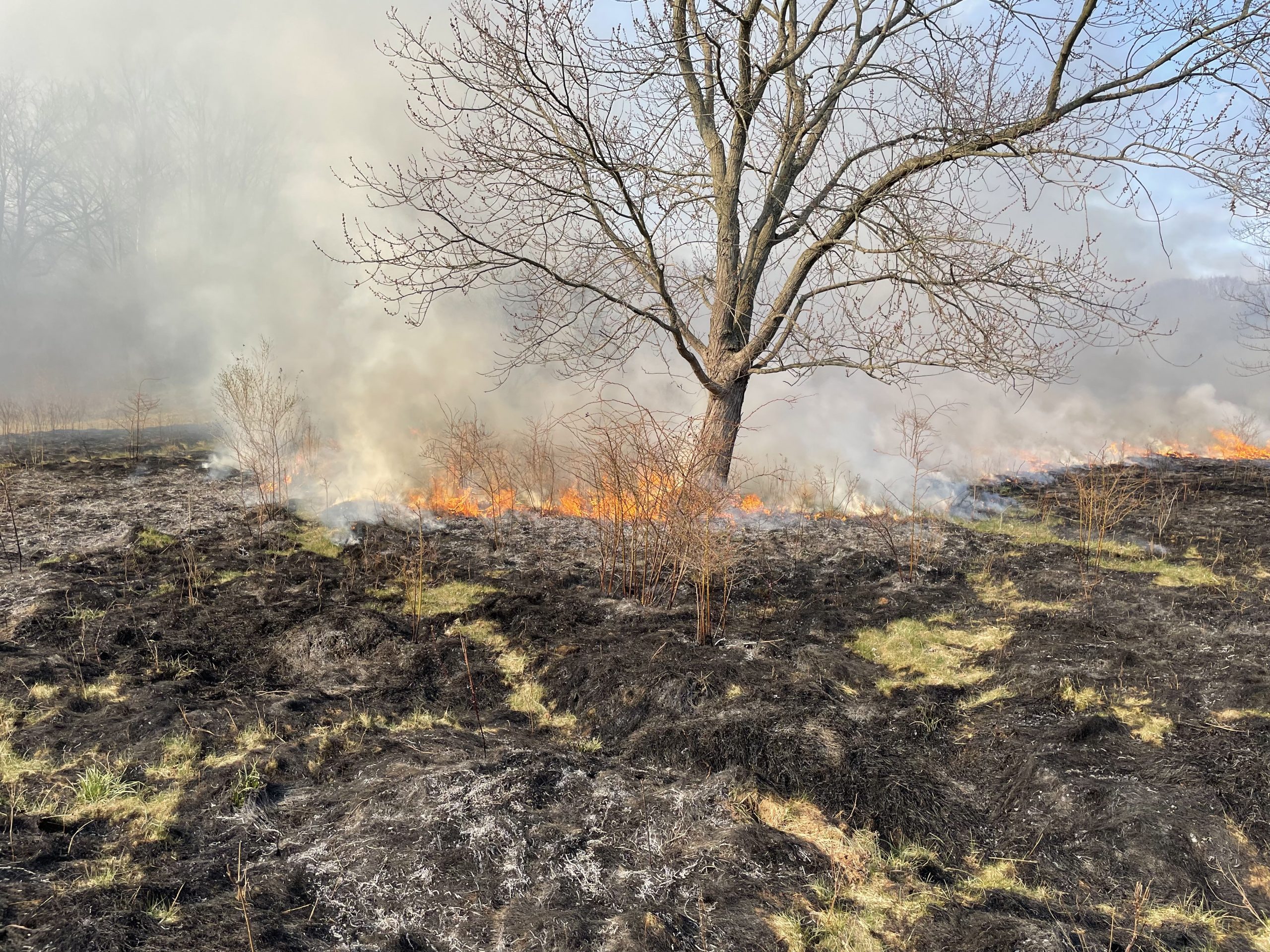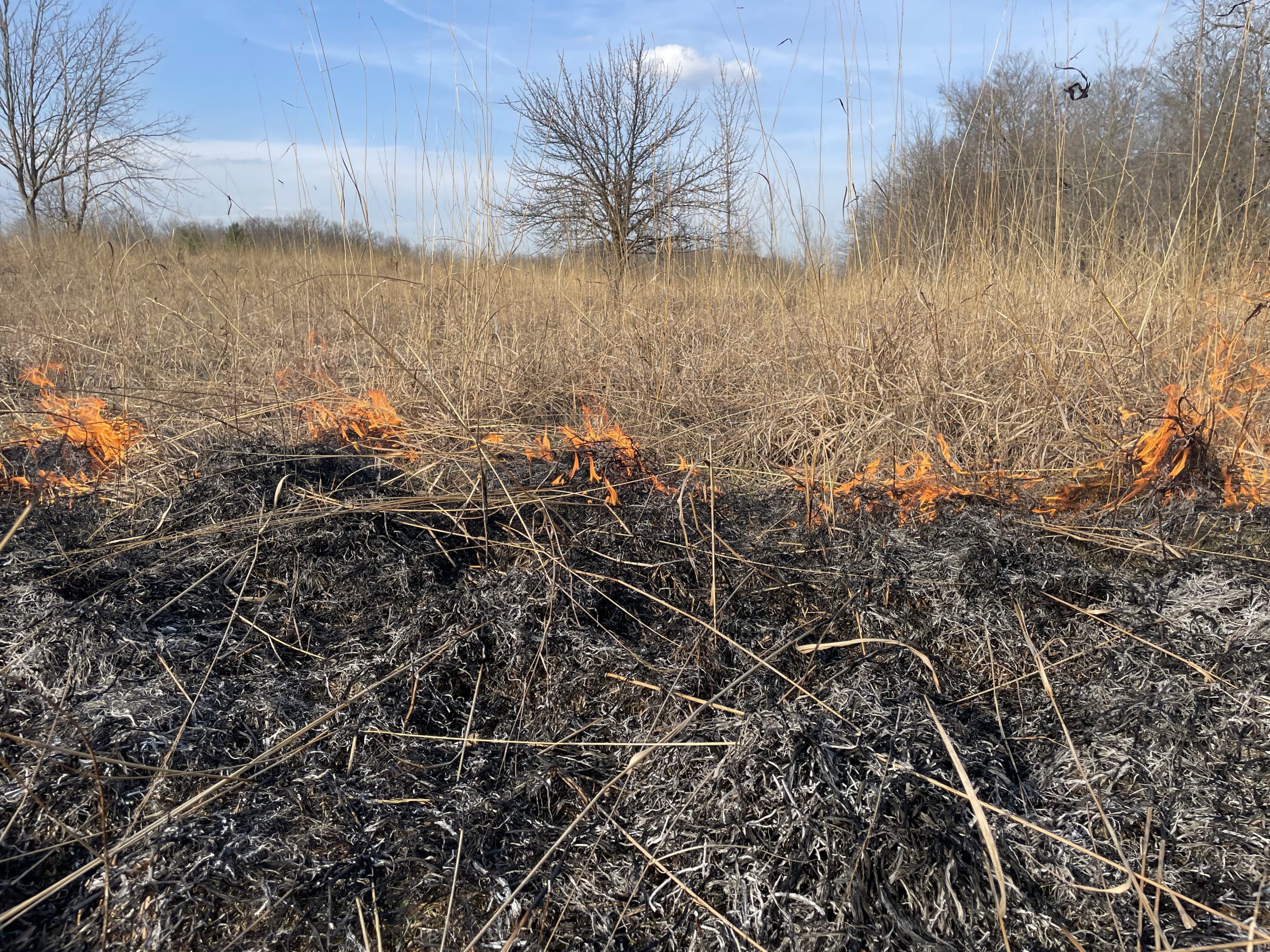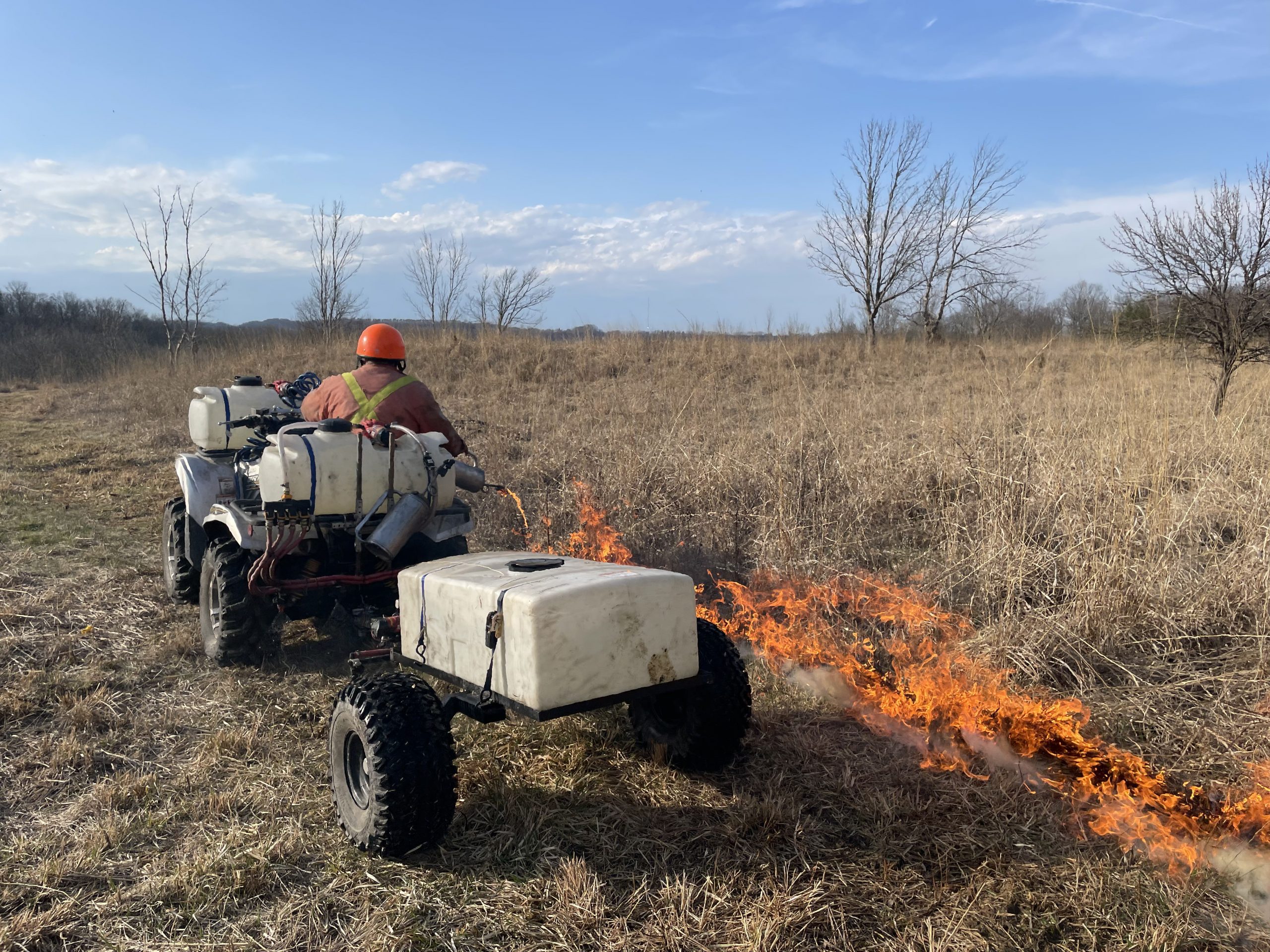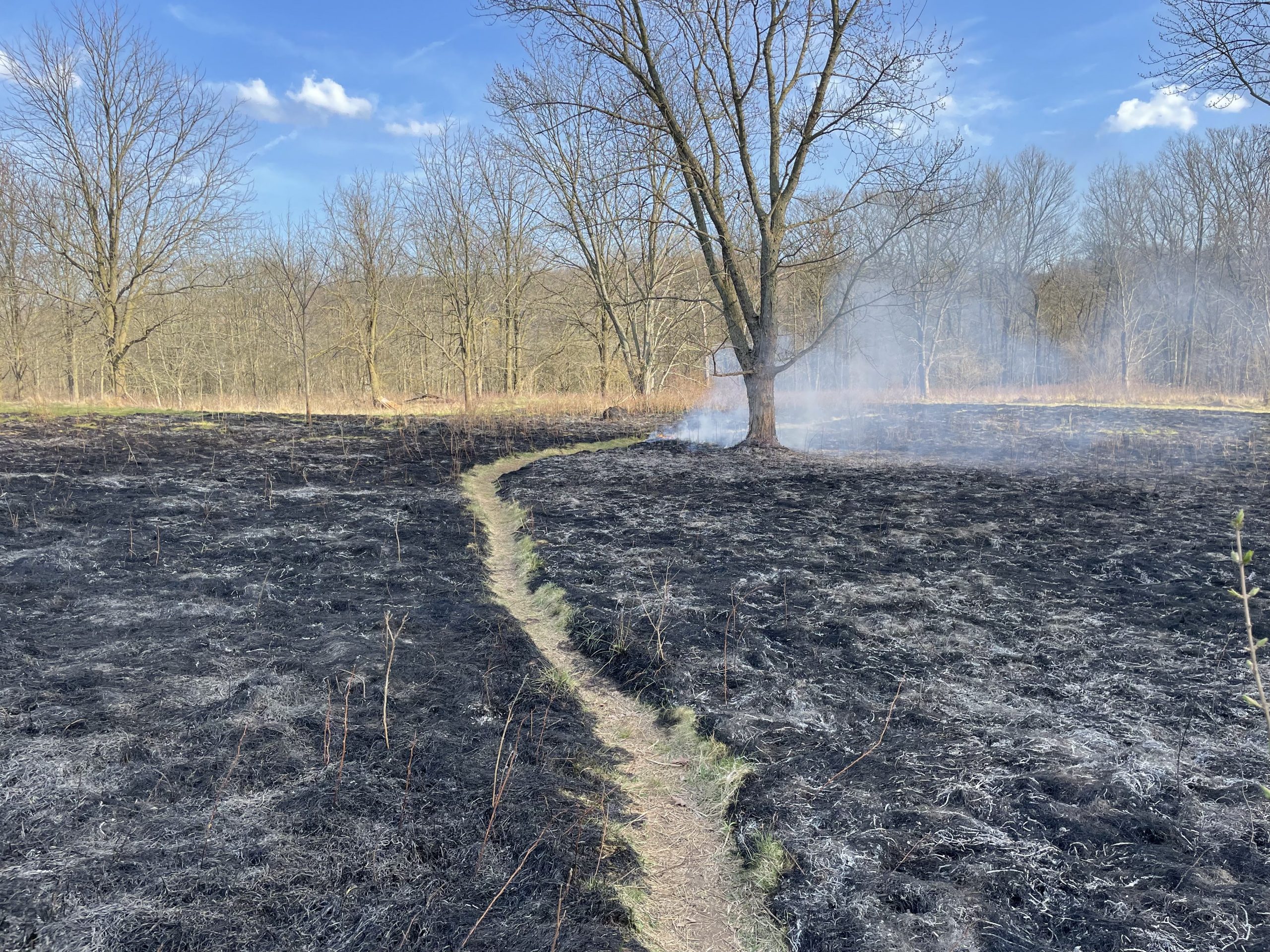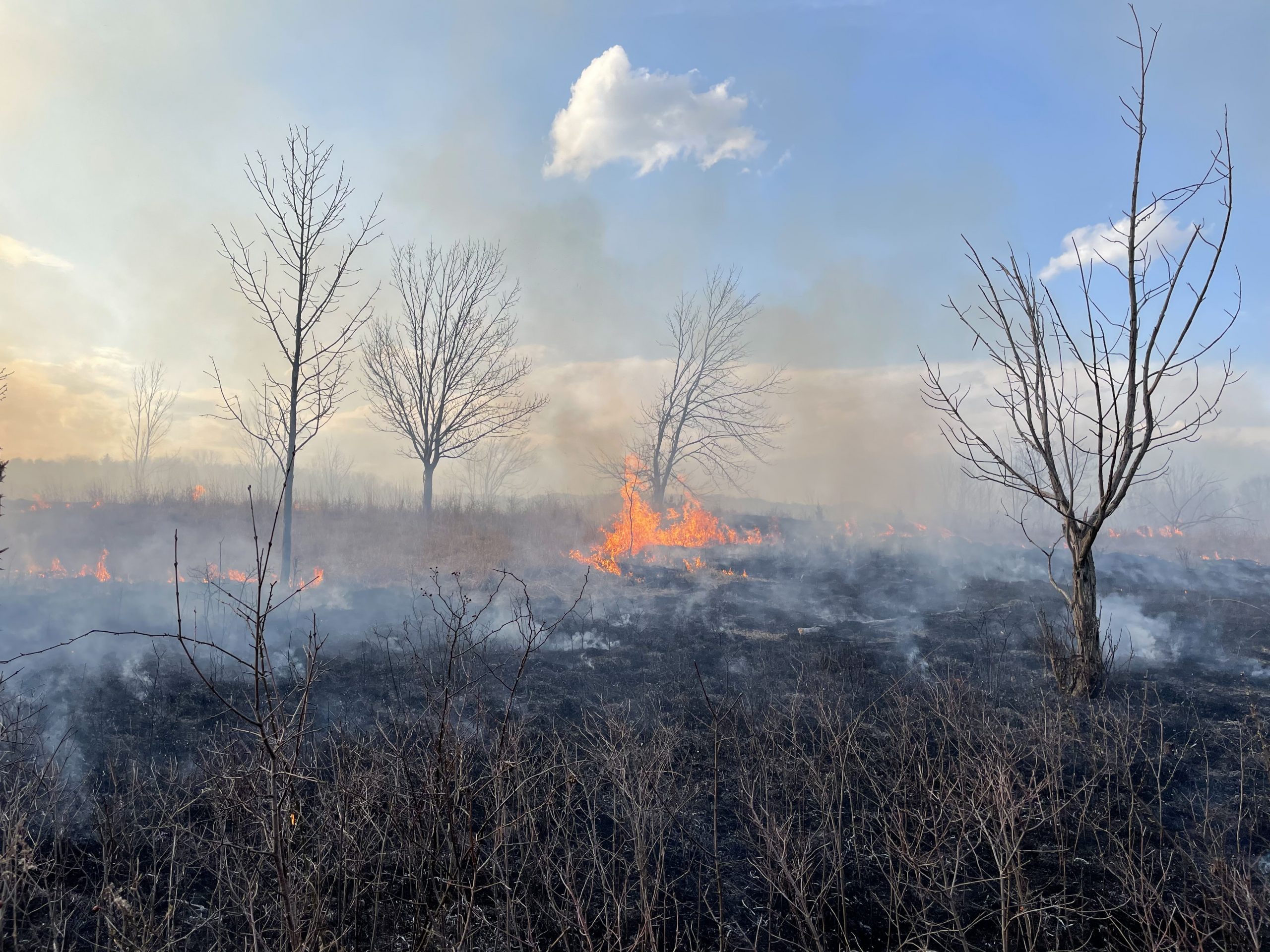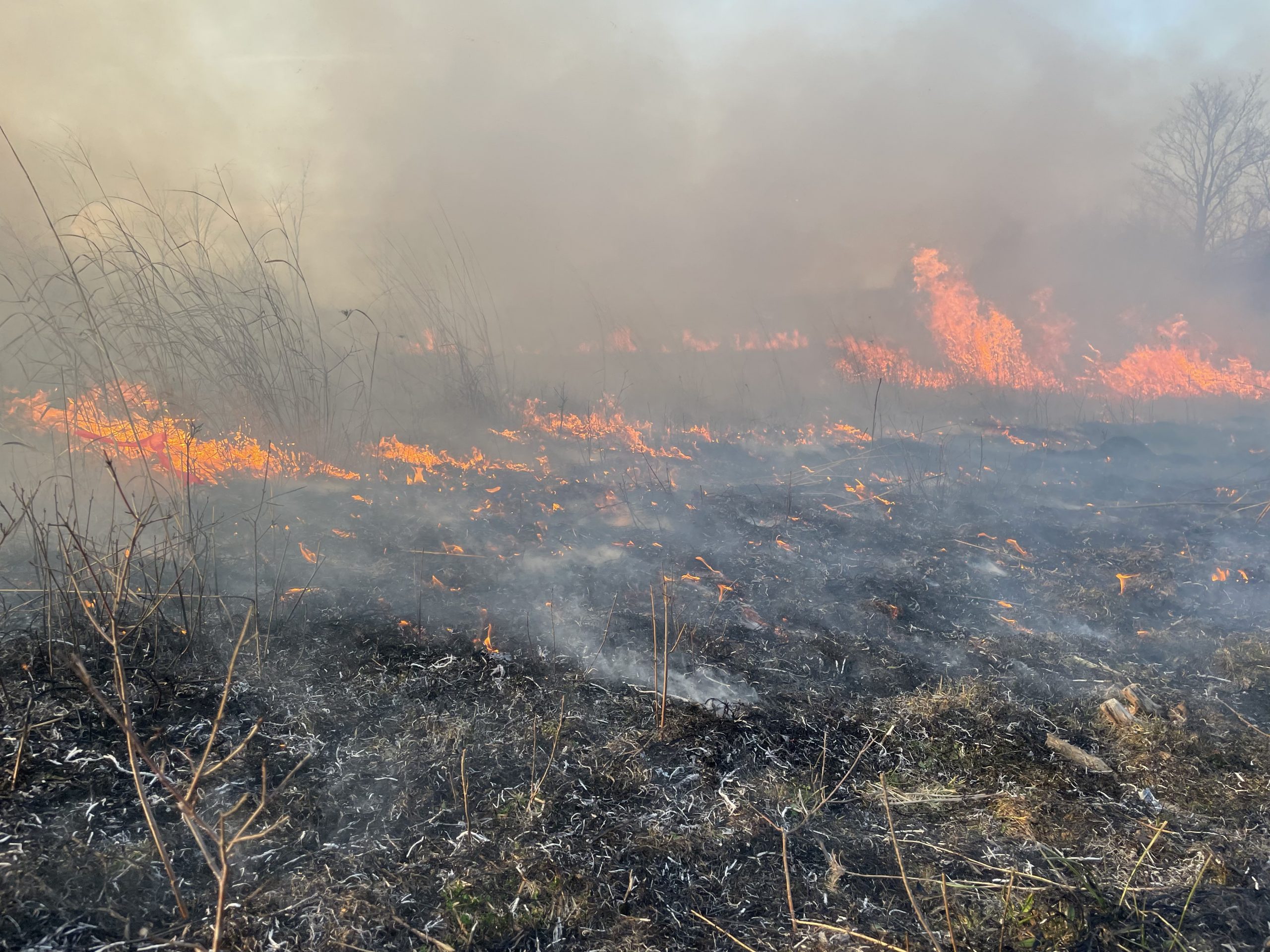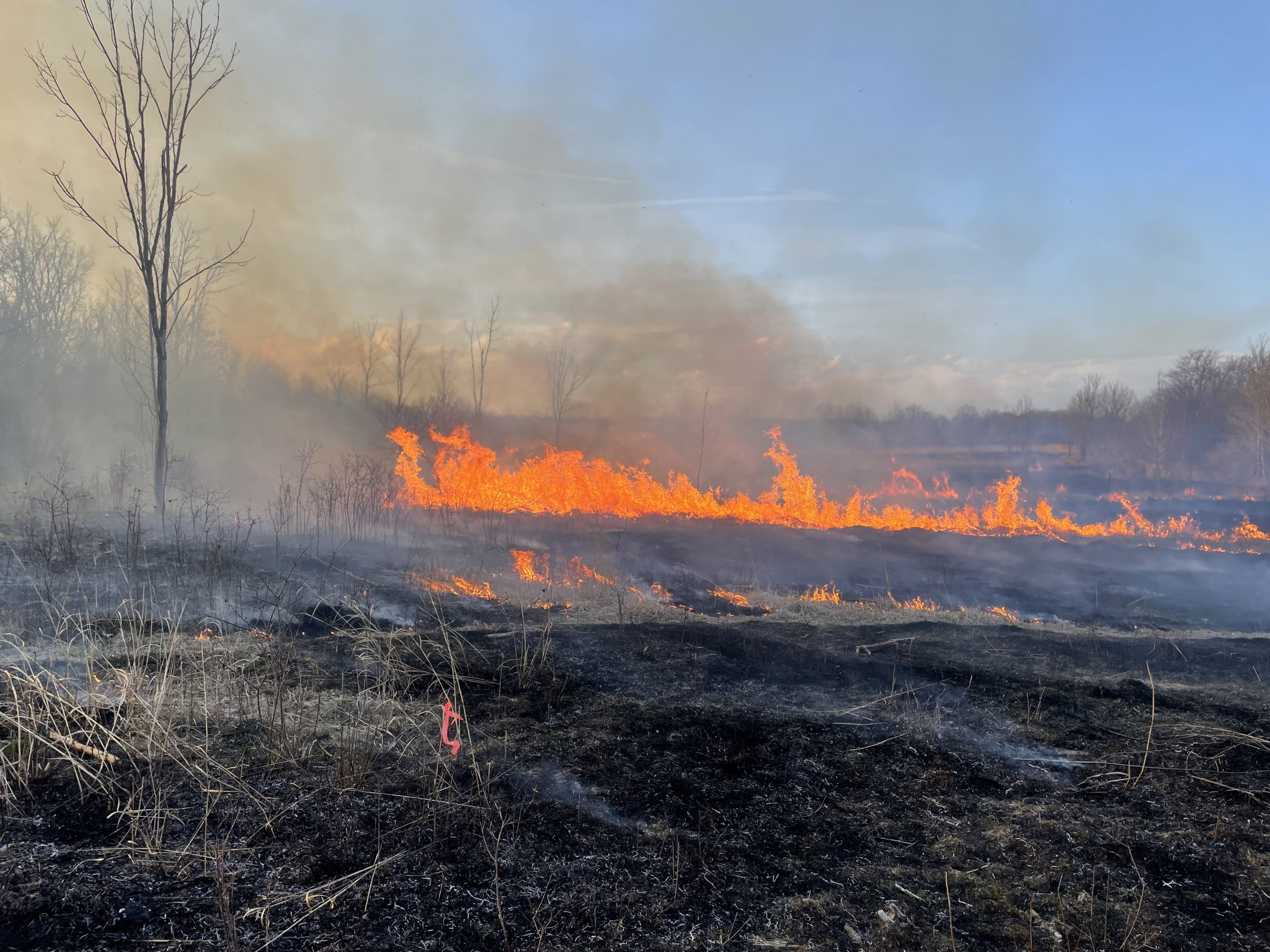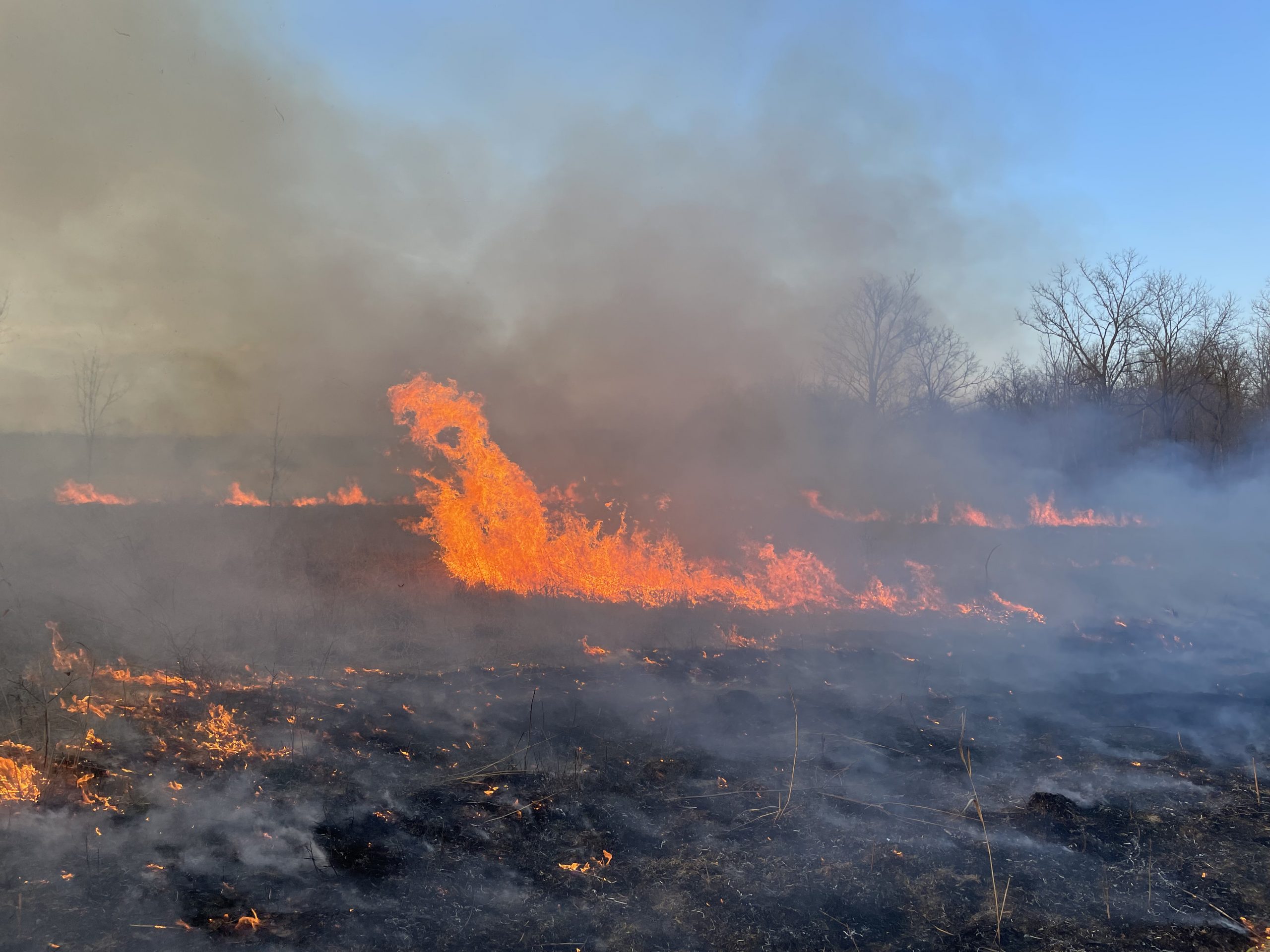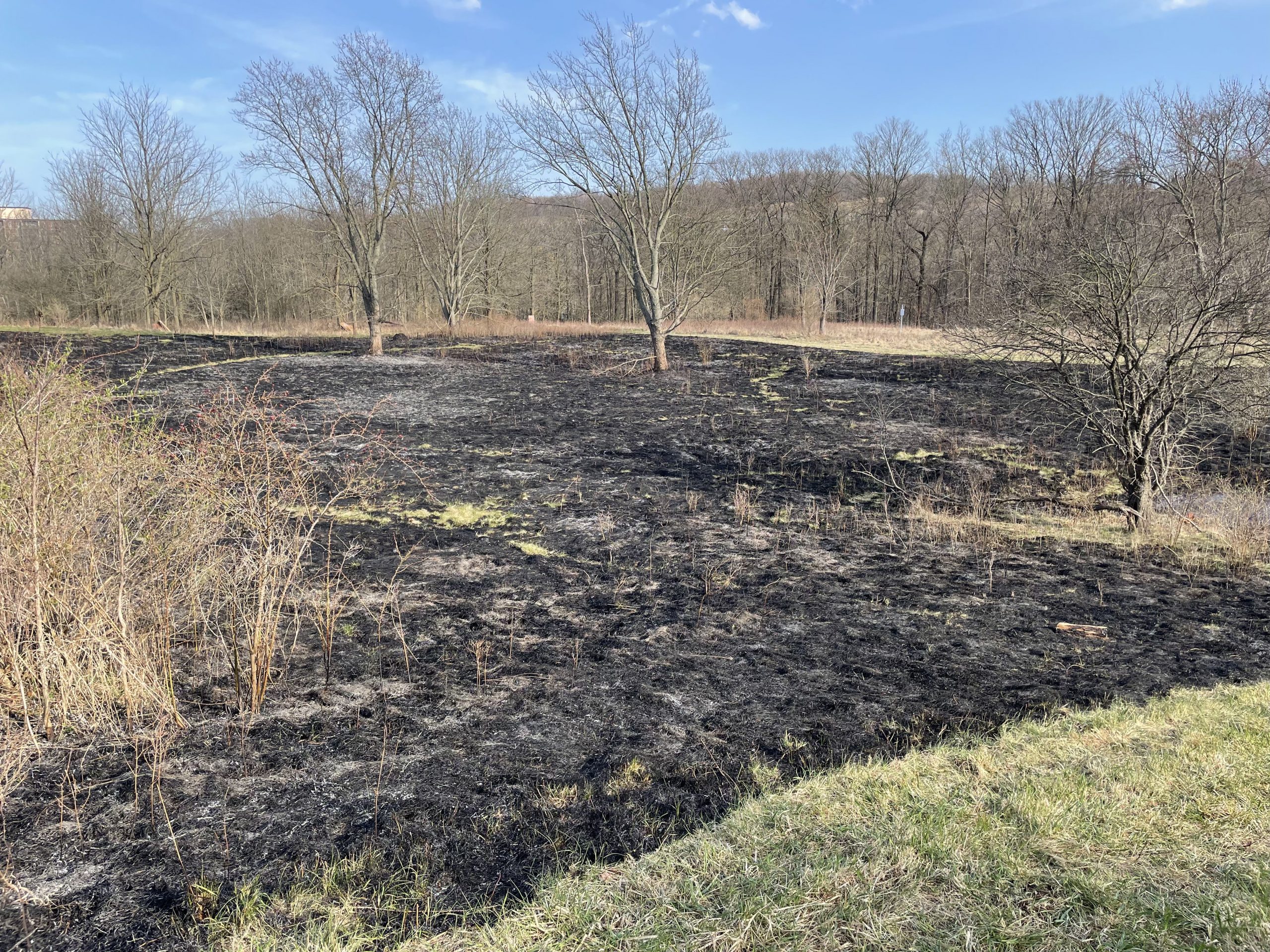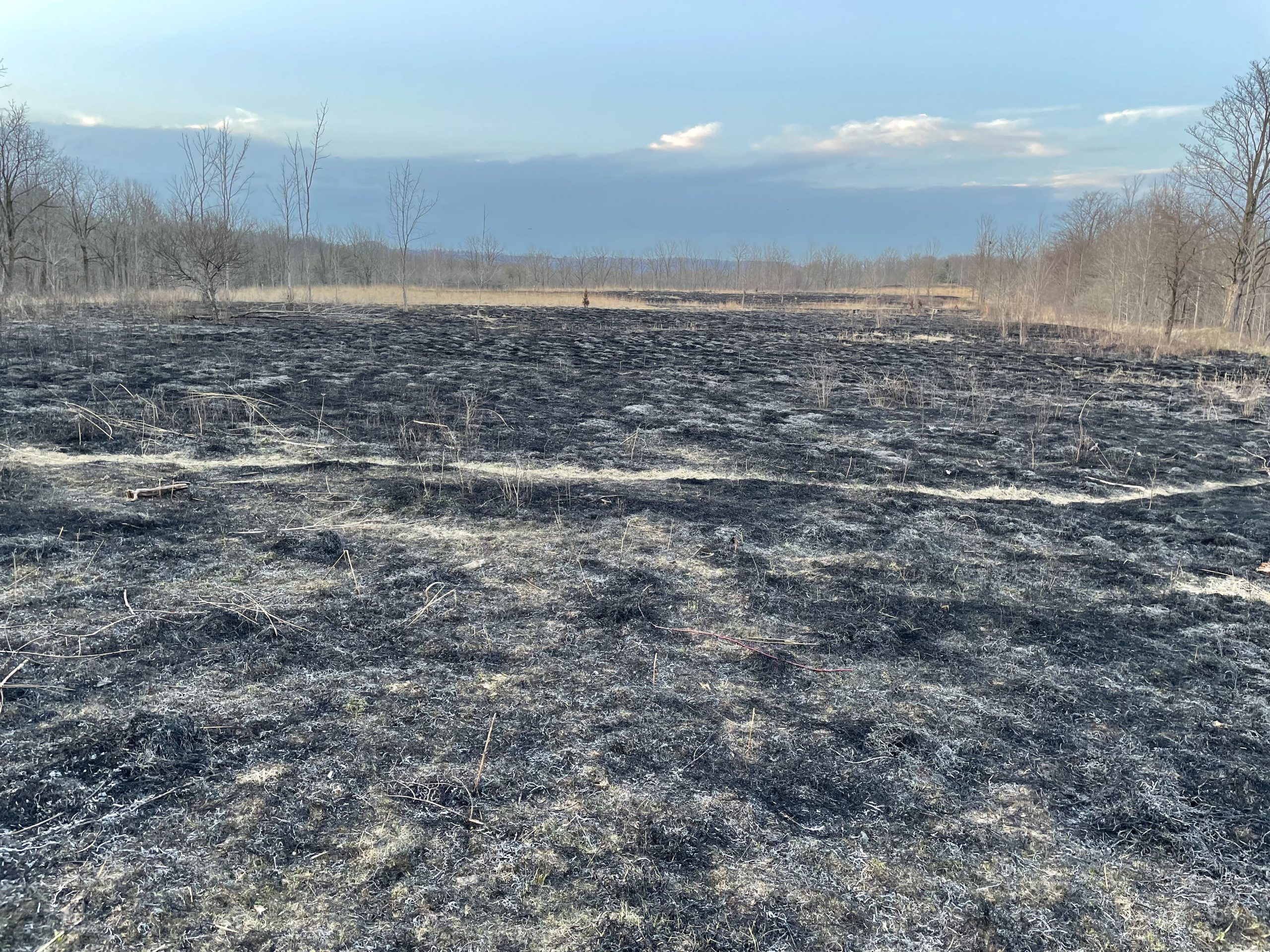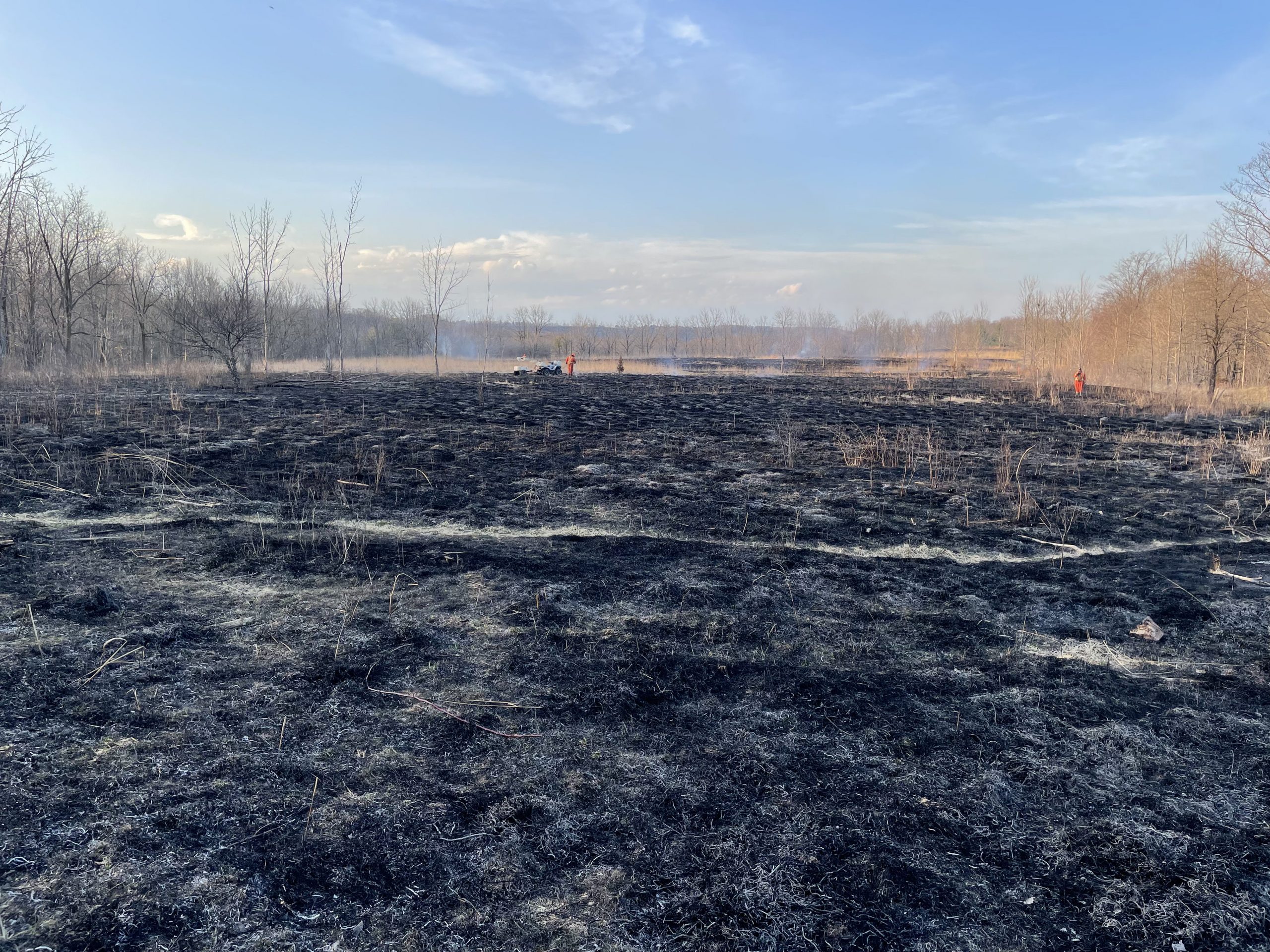Overview
McMaster University relies on controlled burns to maintain its natural lands. If you are visiting campus or live nearby and happen to see plumes of smoke or flames, please do not be alarmed! It is an annual well-thought-out plan managed by professionals.
Why controlled burns?
First and foremost, controlled burns lower the risk of wildfires that could damage the surrounding properties on McMaster Land and its wildlife. Controlled burns promote native plant growth and competition, supplying habitat for local wildlife.
Like much of Ontario’s greenspaces, McMaster lands have many invasive plant species that crowd out their native counterparts. They sprout first, dominate the ground with their roots and grow faster, not letting the native plants grow and find their place. As they quickly spread, they deprive native plants of the nutrients by out-competing them. That is why it is crucial to give native plants a chance by burning out their invasive competitors. Follow this link to learn about the Ontario Invasive Species Control Plan.
McMaster University uses controlled burns to support and strengthen the native plants on its lands. These fires also reduce the number of pests that are potentially host to disease. Even though most ticks found in Hamilton are American Dog Ticks that do not transmit Lyme disease, Eastern Black-legged Ticks (which can transmit Lyme disease) can also be found. Minimizing the spread of these pests limits the potential risk of diseases to wildlife and visitors of McMaster Lands.
Top three things you should know about controlled burns at McMaster
- Most importantly, the burns are done for the sake of tallgrass prairie health, as they contribute nutrients to the soil.
- There are two types of tallgrass prairie that grow in warm and cold seasons. During the warm season, native plants spread, which is good for local ecosystems. However, during the cold season, European species of tallgrass prairie grass start to spread, threatening the local environment. That is why strategic burning in cycles is important to preserve the native grasses and adds nutrients to the soil. The controlled burns reduce those invasive species as native plants have deeper roots in comparison to foreign invasive s that are easy to get rid of.
- Burns operate on slow and low burn methods, which means that fire does not get enough heat to burn trees but simply slowly moves and burns the landscape.
Please do not attempt to burn without the guidance and supervision of experts.
If you have any further questions about the burns, contact Nature at McMaster at nature@mcmaster.ca or shoot us a direct message on Instagram at @naturemcmaster.
Controlled Burn 2018
The McMaster Department of Biology through the Dr. Susan Dudley Lab conducted a controlled burn with the assistance of Wildlife Specialists Inc. in April 2018.
The burn was located at the McMaster Forest Nature Preserve (1105 Lower Lions Club Road) within the created tallgrass prairie area. The burn was approximately 3.5 hectares (8.6 acres).
This burn was to promote tallgrass prairie health by removing excess detritus, putting nutrients back into the soil, suppressing shrub growth, and suppressing the growth of non-native cool season pasture grasses and European buckthorn.
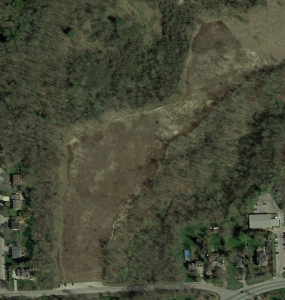
Controlled Burn 2024
Nature at McMaster conducted a controlled burn with the assistance of Wildlife Specialists Inc. at the McMaster Forest Nature Preserve (1105 Lower Lions Club Road) on April 9, 2024. The burn encompassed approximately 4.06 hectares (10.06 acres) of the current tallgrass prairie and the adjacent old field.
This burn was to promote tallgrass prairie health by removing excess detritus, putting nutrients back into the soil, suppressing shrub growth, and suppressing the growth of non-native cool season pasture grasses and European buckthorn. This was the first time burning the adjacent old field ecosystem and we hope to encourage prairie naturalization of this space. Wildlife refuges, or unburnt regions, were left throughout the burn area to provide refuge to small mammals, reptiles, insects, and birds during and after the burn before the vegetation grows back, and provide for early colonization of the burnt regions by insects/invertebrates. The native plant community rebounds incredibly quickly post-burn and by the end of the season there will be little physical evidence that the burn has occurred.
This was the second complete controlled burn and third time using controlled fire at the property.
Controlled burns help maintain the rare tallgrass prairie ecosystem and have an overall benefit for ecosystem and landscape health. There are no long term consequences to controlled burns and they do not have any long term negative impact on the landscape or the species that nest, forage, and otherwise use this environment.

